- News
- Reviews
- Bikes
- Components
- Bar tape & grips
- Bottom brackets
- Brake & gear cables
- Brake & STI levers
- Brake pads & spares
- Brakes
- Cassettes & freewheels
- Chains
- Chainsets & chainrings
- Derailleurs - front
- Derailleurs - rear
- Forks
- Gear levers & shifters
- Groupsets
- Handlebars & extensions
- Headsets
- Hubs
- Inner tubes
- Pedals
- Quick releases & skewers
- Saddles
- Seatposts
- Stems
- Wheels
- Tyres
- Tubeless valves
- Accessories
- Accessories - misc
- Computer mounts
- Bags
- Bar ends
- Bike bags & cases
- Bottle cages
- Bottles
- Cameras
- Car racks
- Child seats
- Computers
- Glasses
- GPS units
- Helmets
- Lights - front
- Lights - rear
- Lights - sets
- Locks
- Mirrors
- Mudguards
- Racks
- Pumps & CO2 inflators
- Puncture kits
- Reflectives
- Smart watches
- Stands and racks
- Trailers
- Clothing
- Health, fitness and nutrition
- Tools and workshop
- Miscellaneous
- Buyers Guides
- Features
- Forum
- Recommends
- Podcast
review
£5,250.00
VERDICT:
Proper gravel racer that belies its weight, and a blast to ride – plus the SWAT storage is a touch of class
Excellent handling for tackling trails at speed
Future Shock 2.0 gives controllable damping
Large tyre clearance
Such a fun ride
Thin bar tape
Bit of a colour clash inside the fork legs
Tyres quite narrow and slick for typical UK conditions
Weight:
9,660g
Contact:
At road.cc every product is thoroughly tested for as long as it takes to get a proper insight into how well it works. Our reviewers are experienced cyclists that we trust to be objective. While we strive to ensure that opinions expressed are backed up by facts, reviews are by their nature an informed opinion, not a definitive verdict. We don't intentionally try to break anything (except locks) but we do try to look for weak points in any design. The overall score is not just an average of the other scores: it reflects both a product's function and value – with value determined by how a product compares with items of similar spec, quality, and price.
What the road.cc scores meanGood scores are more common than bad, because fortunately good products are more common than bad.
- Exceptional
- Excellent
- Very Good
- Good
- Quite good
- Average
- Not so good
- Poor
- Bad
- Appalling
If you are into off-road adventures and looking for a bike that's more gravel racer than sedate bikepacking rig, the Diverge Expert Carbon from Specialized is definitely worth a look. It's nimble, feels way lighter than it actually is, and the handling is absolutely spot on when faced with a bit of technical singletrack.
It doesn't stop there either. The Diverge is massively versatile if carrying kit is you, erm, bag, and comfort is taken care of by the clever Future Shock suspension system. It certainly helps offset the too-thin bar tape.
> Find your nearest dealer here
For a moment during this test, deep in the countryside, I spotted a hare matching the pace of the Diverge Expert Carbon. And while I reckon it had us on the speed of its direction changes, it was only just...
This moment was probably the highlight of the many gravel rides I did on the Specialized, and really cemented just how good this bike is. It was a sunny mid-week afternoon ride and the trails were quiet, so I could really unleash the Spesh on the chalky trails towards my first monument of the day – Avebury.
It was the first time I've ridden this specific section in the dry and it's fast and smooth in places, but rutted in others – thanks to the trail being well-used throughout the washout that was May.
With 20mm of travel from the Future Shock 2.0 (more about that in a bit) suspension system, I could just let the bike get on with it. Descending one narrow rut – dug there by the Land Rovers and tractors that frequent it – proved just how precise and quick the handling is. And with tall grass either side obscuring all sorts of rocks and potholes, it was called up on many times, especially with speeds touching over 30mph at times.
The Future Shock meant the front wheel was on the ground much more often than not, for greater control, and ensured that speed was scrubbed off should the need to haul on the awesome GRX disc brakes arise.
At 9.66kg the Diverge doesn't exactly sound light, but in use it feels a good couple of kilos lighter than that, even with it wearing a handlebar bag, a top tube bag and small saddle pack.
This lets you bunny hop yourself out of trouble should the track or trail in front of you suddenly disappear or be blocked. It feels unhindered when climbing also.
It's such a nimble little beast – regardless of surface – and feels planted and really confident in itself. Even when it was out of control (the tyres float around a lot on small aggregate), it still felt in control, if you know what I mean.
I could feel the tyres sliding, but the feedback from the stiff frame tells you how they're sliding, which direction they're headed and how tiny little changes to your body position are having an effect on regaining control. It's a drifter's paradise!
The Expert Carbon's frame is tight, as is the fork. There isn't any power being lost, which is why you feel like it's always worth giving the pedals a little dig as you hit the base of a climb.
If you're competing, it gives you an edge knowing the handling will get you through the technical bends at speed – and then you can hammer out of them like a crit specialist.
It can get away with being this stiff thanks to that Future Shock system up front and the compact frame geometry allowing you to run a lot of seatpost, which has a noticeable amount of flex to take the sting out.
Some of the routes I rode the Diverge on are around the 100km mark, with about 85% of that off-road. They cover a real mix of surfaces, from hardpacked gravel, grass, chalk, small aggregate and muddy singletrack through the woods. It's not the type of distance or terrain where you are always going to be going flat out.
Calm down, dear
The Diverge can switch between full-on race bike and gravel cruiser just like that though, and without the ride becoming any less captivating or fun.
Backing off a touch sees it maintain its performance persona. The handling, for instance – while quick and precise – never becomes a hinderance at lower speeds. It means the Specialized is an easy bike to ride whatever, and even loading it up with over 10kg of camping kit doesn't massively change its behaviour.
On tarmac sections the steering isn't as quick a dedicated road bike, but unless you're pointing it at a high speed, technical descent, it's never going to feel out of its depth.
In fact, I'd go as far to say the Diverge could work very well as a year-round commuter with a set of slick tyres on.
Future shock 2.0
I've been critical of the Diverge's Future Shock system in the past, but that was while I'd only ever used the 1.5 version found on cheaper bikes. That comes with three elastomer options, but even on the firmest I still get 'bob' from the front end on the road, and it's just not a feeling I like. I'm not saying it's a bad system, it's just not for me.
This Future Shock 2.0, though, has hydraulic damping, and the rate can be adjusted by a dial on top of the stem. It goes from locked out to the full 20mm of springiness.
If you've read some of my other gravel bike reviews, you'll know it's the simplicity of them I like. They hark back to the fully-rigid mountain bikes I used to ride in my teens, when the only suspension you had was your elbows and knees.
For that reason, I'm not exactly thrilled to see suspension forks and seatstay systems rearing their heads on some of the latest gravel bikes.
But I like the Future Shock 2.0. There is just enough movement to take the vibrations out of gravel surfaces, but not enough to mute the signals coming from the tyres. It won't cope with massive jolts, either, so you still need to keep an eye on the trail and use your arms and legs to soak up the impacts, just like the old days.
For me though, it's on the road where it performs the best, in a weird kind of way. Unless you are really lucky to have a massive network of gravel routes local to you, you're probably spending a fair bit of each ride on the roads in between. Gravel bikes can be a bit of a compromise here, but that's mostly down to tyre pressures.
For comfort and grip you're always going to want the tyres softer for the off-road sections which means a squidgy ride on the tarmac. That might not bother you, but it bugs the hell out of me.
Dial C for Comfort
Thanks to the Future Shock (and the seatpost flex) I could run the tyres much harder for the road sections with the damping locked out, so I could zing along with road bike performance and – as soon as the gravel appeared – get back to full comfort mode with a quick twist of the dial.
On bigger rides where longterm comfort was more of a concern, I could decide how much or little damping I wanted on the road by way of the segmented settings offered by the dial.
It even helps with fatigue in the wrists, brought on by the Diverge's thin bar tape. I don't wear gloves though, so if you've got padded mitts you might well be alright with it.
Frame and Fork
Like many brands, Specialized uses differing grades of carbon fibre in their frame construction to create a balance of stiffness, weight and cost. The top-end S-Works Diverge gets the lightest and stiffest 11r frame, while the entry-level Base Carbon Diverge uses the 8r. The Expert Carbon sits in the middle with 9r.
As I've said in the ride section, it's a good frame offering loads of stiffness for performance riding, and weight isn't an issue. With gravel tyres getting ever wider, the Diverge hasn't been left behind there either. On a 700c wheel it takes up to 47mm tyres, and on 650b it goes up to 2.1in (about 54mm).
Many gravel bikes use a dropped driveside chainstays for chainring clearance with wider tyres, to avoid damage from things like chainsuck. Specialized has got around this with a solid section of chainstay that can withstand damage, and stuck with symmetrical chainstays.
Other cool details include the SWAT internal storage, which sits underneath the down tube bottle cage mounts. A door allows access to the inside of the down tube, where you can stash stuff in the included bag.
It also means Specialized can't get sloppy when it comes to the internal frame finish...
I could fit an inner tube, various tools, tyre levers and so on in the bag, and stash it away inside the frame – and still have room for a lightweight rain jacket too. It's a clever use of space.
Mounting points include traditional positions for two bottle cages with a couple more for carrying kit on the fork, and bolts on the top tube for fitting a bento box – ideal for gels and food. It'll also take mudguards and a rack, should you so desire.
Another welcome addition is the protector plate covering the bottom of the down tube and under the bottom bracket. Wider tyres have a habit of flicking up rocks and stuff, so this should stop you ending up with an expensive repair job.
For a clean look the Diverge runs all cables and hoses internally – not that there are that many cables on this model anyway, with it running a 1x GRX Di2 groupset.
While we're on the subject of aesthetics, I must admit the 'Sunburnt Zebra' paintjob (officially Gloss Raspberry/Redwood/Black/Chrome/Wild Ferns, but...) did grow on me, or at least, it did with the exception of the bright red panels inside the fork legs. That is just a clash too far.
What else? All the usual stuff really, such as flat mount brake caliper fittings, 12mm thru-axles front and rear, and a bottom bracket of the external threaded type.
Geometry
Available in seven sizes, the Diverge has the most progressive geometry that Specialized has ever created for a drop bar bike – says Specialized – with the goal of creating a capable, stable bike in the dirt that still feels responsive and nimble on the road.
As you can tell from the first section of the review, I think they have done a very good job.
Numbers-wise, our 54cm model sizes up thus: a top tube 558mm long; a 116mm head tube (it's short due to the Future Shock system); and a 470mm seat tube. Chainstay lengths are 425mm across all sizes, which equates to a 1,032mm wheelbase on this size.
The head angle is 71.25° while the seat angle is a relatively steep 73.5°. The fork length is 389mm, and it has a rake/offset of 55mm for a trail figure of 61mm. Stack and reach are 592mm and 383mm respectively.
Finishing Kit
It's a top-flight build for the Diverge Expert Carbon, using Shimano's gravel specific GRX Di2 groupset. It's not a setup I've used a lot in the past, but if you're a fan of its road electronic groupsets, you won't be disappointed.
I'm currently working on a full review (which be up soon), so for now I'll just say the shifting is quick, very precise and seems unbothered regardless of weather or trail conditions.
> Road bike vs all-road bike vs gravel bike: what’s the difference and which one is right for you?
The RX815 STI levers are shaped differently than the mechanical versions. They have a much smaller hood, but a more pronounced arc to where the brake lever sits.
This really helps on technical descents, as with your weight forward and being bounced around on the rough stuff, there is no way your hands are going to slip off at all, even when wet. I've never had an issue with the mechanical GRX levers really, but these are just even more confidence-inspiring.
For braking, the Diverge uses 160mm rotors front and rear, and the whole hydraulic setup works excellently. It's powerful enough for single-finger stopping, which lets you keep the rest of your fingers firmly wrapped around the handlebar at speed, yet offers so much feel you can easily modulate things to minimise lock ups.
Gearing wise, the crankset is fitted with a 40T ring and paired to an XT 11-42T cassette. For me it gives a great range for off-road use, and it doesn't feel that gappy either between the sprockets.
On road there are a few compromises with top-end speed, though – you'll be spinning like mad at pretty much anything above 35mph.
The rest of the finishing kit is Specialized-branded stuff, like the Body Geometry Power Expert saddle. I like the short saddles – going with that design on my own gravel bike – and I got on well with this one.
There's a bit of sponginess to the foam, but it's not overly soft, which is good. In my experience a soft saddle can cause pressure points and numbness.
The Roval Terra Carbon seatpost flexes a fair bit when you want it to, but only in certain directions, so you don't feel like you are bouncing around unnecessarily.
Stem length is shorter than you'd find on a similar-sized road bike, with the Future Stem Pro measuring just 80mm. That connects to the Adventure Gear Hover handlebar with a shallow 103mm drop and a 12° flare, which gives you a wider stance for control and aids cornering at high speed.
Wheels and tyres
Despite its clearances, the Diverge comes with quite slender 38mm Pathfinder Pro 2 Bliss tyres. In the dryness of spring/summer they can't be faulted as all rounders, though. With tread on the shoulders and a smooth central section they do alright on gravel, while singing along well on road.
If the gravel is made of really small stones though, they tend to float about a lot, and if the going is soft, they struggle.
The Diverge would really benefit from something wider – 40mm at least – or more suited to the UK's weather and tracks. The 42mm Rhombus Pro 2Bliss Ready tyres for instance, which come straight from Specialized's catalogue and could be possibly swapped at the point of sale.
The Pathfinders seemed robust enough, at least, and when switching them to tubeless (they come with tubes) on test wheels they popped onto the rims without issue.
Wheel wise, you're getting a set of DT Swiss G540s. It's a good all-round wheelset that does the job over broken surfaces and rough gravel, but for this money I'd expect to see carbon wheels.
Value
If you like what you see so far and are considering the Diverge Carbon Expert as your next purchase, you're be looking at laying down £5,250 for the pleasure. That's at full RRP which, let's be honest, most things are at the moment in the cycling world.
Competition wise, there is the Canyon Grizl CF SLX 8 Di2 at £4,999.
Our sister site off.road.cc found the geometry a little bit road-biased and a bit aggressive for a gravel bike, but over here – with our tarmac loving ways – it looks like a gravel racer, with geo pretty similar to the Diverge. It'll take a larger tyre at 50mm too, plus it comes with a 2x setup rather than 1x.
The biggest boost over the Spesh, though, is the deep section carbon DT Swiss GRC1400 DB wheelset. That Grizl's not available until at least November 2021 though, which might sway your position.
> 19 of the best 2021 gravel bikes & adventure road bikes
One of my favourite high-performance bikes is also from Canyon's stable, the Grail. When I rode the newly-launched CF SL 8.0 SL model a couple of years ago I was blown away. It's a properly fast bike that has a lot in common with this Diverge. They are both high-end gravel race machines, although the Grail is fair few hundred grams lighter.
A lot of people don't like the 'Hover' handlebar, and while it's a faff if you run lights and things, it offers huge amounts of comfort. Not quite as much as the Future Shock, but it does a good job.
The equivalent CF SLX 8 Di2 model retails for £5,199, but like the Grizl it also comes with deep section DT Swiss carbon fibre wheels.
Throwing a curve ball into the mix, I'm currently testing the Vitus Substance CRS 2, and it's an absolute belter.
The 650b tyres bring masses of comfort even at higher pressures, and while there isn't a GRX Di2 version, there is a Rival eTap AXS model for just £2,499.99.
Okay, so it gets an alloy seat post and no fancy suspension system, but when it comes to ride quality there isn't a huge amount of difference.
I get it – pricing is not as simple as all that. Carbon grades and techniques that many brands keep secret make a huge difference to production costs, but as an end user the Vitus punches well above its weight for performance and weight versus price.
Conclusion
Overall, I had an absolute blast riding this bike. Everything just seems to work. Its weight on the scales is irrelevant, as it just feels so urgent and sprightly on the trails, and it behaves with such composure it lets you push your limits. Take it away from the rough stuff and it rides well too.
It's a good quality build, although it does give away a bit in terms of the spec list against some bikes on the market – an upgrade to wider tyres would be one of the first things on my list, for instance, were this bike mine.
Verdict
Proper gravel racer that belies its weight, and a blast to ride – plus the SWAT storage is a touch of class
road.cc test report
Make and model: Specialized Diverge Expert Carbon
Size tested: 54
About the bike
List the components used to build up the bike.
FRAME Specialized Diverge FACT 9r carbon, SWAT™ Door integration, Future Shock suspension, threaded BB, internal routing, 12x142mm thru-axle, flat-mount disc
FORK Future Shock 2.0 w/ Damper, Smooth Boot, FACT carbon, 12x100 mm thru-axle, flat-mount
HANDLEBARS Specialized Adventure Gear Hover, 103mm drop x 70mm reach x 12° flare
STEM Future Stem, Pro
TAPE Roubaix S-Wrap
SHIFT LEVERS Shimano GRX RX815 hydraulic brake levers, 11 speed electronic shifting
CASSETTE Shimano XT, 11-speed, 11-42t
REAR DERAILLEUR Shimano GRX RX817 Di2, 11-speed
CRANKSET Shimano GRX RX810-1
CHAINRINGS 40T
BOTTOM BRACKET Shimano Threaded BSA BB
FRONT WHEEL DT Swiss G540 rim, 24mm internal width, tubeless ready, 24h, Specialized full sealed bearing thru axle hub, centerlock disc, DT Swiss Champion 14G stainless steel spokes, DT Swiss brass nipples
REAR WHEEL DT Swiss G540 rim, 24mm inner width, tubeless ready, 24h, Specialized full sealed bearing thru axle hub, centerlock disc, alloy freehub body, DT Swiss Champion 14G stainless steel spokes, DT Swiss brass nipples
FRONT TYRE Pathfinder Pro, 2Bliss Ready, transparent sidewall, 700x38mm
REAR TYRE Pathfinder Pro, 2Bliss Ready, transparent sidewall, 700x38mm
INNER TUBES 700x28/38mm, 48mm Presta valve
SADDLE Body Geometry Power Expert
SEATPOST Roval Terra Carbon Seat Post, 20mm Offset
SEAT BINDER Alloy, 30.8mm
SWAT Integrated SWAT door, internal storage system
Tell us what the bike is for and who it's aimed at. What do the manufacturers say about it? How does that compare to your own feelings about the bike?
Specialized says, "Whether your goal is to escape on gravel back roads, far from cars and crowds, or drop the hammer at the front of your favorite gravel race, no bike does it better than the new Diverge. It's quite simply the fastest, most capable - and just maybe the most fun - bike we've ever made, delivering a ride that's quick and lively under power, but stable and confidence inspiring when the terrain gets rough. From Future Shock 2.0 and all-new gravel geometry, to internal storage and category leading tire clearance, the new Diverge represents everything we've learned over more than 40 years of riding road, gravel and dirt. The Diverge writes an entirely new chapter in the gravel bike category, so you can dream up entirely new rides. It's the ultimate getaway vehicle."
It's a very capable bike with a racy edge to it.
Where does this model sit in the range? Tell us briefly about the cheaper options and the more expensive options
The S-Works Diverge tops the lineup at £10,850, while the Carbon Pro Campagnolo LTD & Carbon Pro are £7,250. Below the Carbon expert is the Comp Carbon at £4,000. The entry level option is the Base Carbon at £2,600.
Frame and fork
Overall rating for frame and fork
8/10
Tell us about the build quality and finish of the frame and fork?
The quality is very good – there are no blemishes on the inside of the down tube, for instance, which would be noticeable when opening the SWAT storage door.
Tell us about the materials used in the frame and fork?
The frame uses Specialized's FACT 9r carbon, while the fork is full carbon fibre too.
Tell us about the geometry of the frame and fork?
All the geometry data is in the review for the tested size, and all other sizes can be found on Specialized's website. Some numbers, such as the short head tube, are skewed by the inclusion of the Future Shock system, but on the whole it's aimed more at the performance side of things.
How was the bike in terms of height and reach? How did it compare to other bikes of the same stated size?
Height and reach is pretty typical for this kind of bike, and I felt the position worked well.
Riding the bike
Was the bike comfortable to ride? Tell us how you felt about the ride quality.
Ride quality is good, mostly due to the flex in the seatpost and the Future Shock system.
Did the bike feel stiff in the right places? Did any part of the bike feel too stiff or too flexible?
Overall stiffness is very good from a performance point of view, and the Diverge can get away with it because of the comfortable seatpost and Future shock.
How did the bike transfer power? Did it feel efficient?
It's a very efficient bike, helped by those stiffness levels and a good gear ratio selection.
Was there any toe-clip overlap with the front wheel? If so was it a problem?
No.
How would you describe the steering? Was it lively neutral or unresponsive? Quite lively on the gravel, more sedate on the road.
Tell us some more about the handling. How did the bike feel overall? Did it do particular things well or badly?
If you really want to push on, the Diverge rewards you with fast steering that deals with everything coming your way. It errs on the side of caution though, so if you want to take things more sedately the bike never feels a handful.
Which components had the most effect (good or bad) on the bike's comfort? would you recommend any changes?
Definitely the seatpost and Future Shock; they do a great job of taking the edge off.
Which components had the most effect (good or bad) on the bike's stiffness? would you recommend any changes?
The handlebar offers plenty of stiffness for those hard efforts out of the saddle.
Which components had the most effect (good or bad) on the bike's efficiency? would you recommend any changes?
I'm going to say the Future Shock system, as it allows you to carry more speed over the rough sections.
Rate the bike for efficiency of power transfer:
8/10
Rate the bike for acceleration:
8/10
Rate the bike for sprinting:
8/10
Rate the bike for high speed stability:
9/10
Rate the bike for cruising speed stability:
8/10
Rate the bike for low speed stability:
8/10
Rate the bike for flat cornering:
8/10
Rate the bike for cornering on descents:
8/10
Rate the bike for climbing:
8/10
The drivetrain
Rate the drivetrain for performance:
9/10
Rate the drivetrain for durability:
8/10
Rate the drivetrain for weight:
8/10
Rate the drivetrain for value:
7/10
Tell us some more about the drivetrain. Anything you particularly did or didn't like? Any components which didn't work well together?
The GRX Di2 is a great groupset, shifting smoothly even when covered in dust and mud.
Wheels and tyres
Rate the wheels for performance:
7/10
Rate the wheels for durability:
8/10
Rate the wheels for weight:
7/10
Rate the wheels for comfort:
7/10
Rate the wheels for value:
7/10
Tell us some more about the wheels.Did they work well in the conditions you encountered? Would you change the wheels? If so what for?
A decent set of wheels that cope with daily abuse on the trails.
Rate the tyres for performance:
7/10
Rate the tyres for durability:
8/10
Rate the tyres for weight:
7/10
Rate the tyres for comfort:
7/10
Rate the tyres for value:
7/10
Tell us some more about the tyres. Did they work well in the conditions you encountered? Would you change the tyres? If so what for?
These are good tyres if you spend a lot of time on the road or very hardpacked surfaces. They're quite smooth and narrow for your typical UK gravel tracks and weather conditions, though.
Controls
Rate the controls for performance:
8/10
Rate the controls for durability:
8/10
Rate the controls for weight:
7/10
Rate the controls for comfort:
9/10
Rate the controls for value:
7/10
Tell us some more about the controls. Any particularly good or bad components? How would the controls work for larger or smaller riders?
The Future Shock is a massive plus, especially from a performance riding point of view, and just takes the edge off of the buzz. A decent flare on the handlebar gives a comfortable, confident position too.
Your summary
Did you enjoy riding the bike? Yes
Would you consider buying the bike? Yeah – although there's some tough competition out there
Would you recommend the bike to a friend? Yes
How does the price compare to that of similar bikes in the market, including ones recently tested on road.cc?
It's not too far off against similar bikes such as the Canyon Grail or Grizl, which both come with slightly more fancy wheels for a bit less money. The Vitus is a wild card (mentioned in the review), but shows what you can get for your money without sacrificing performance.
Rate the bike overall for performance:
9/10
Rate the bike overall for value:
6/10
Use this box to explain your overall score
The Diverge Expert Carbon is a solid performer across the board, offering comfort through clever design and speed through great stiffness and well-sorted geometry. Its response to anything you ask it to do is very good indeed.
About the tester
Age: 42
I usually ride: This month's test bike My best bike is: B'Twin Ultra CF draped in the latest bling test components
I've been riding for: Over 20 years I ride: Every day I would class myself as: Expert
I regularly do the following types of riding: time trialling, commuting, club rides, sportives, fixed/singlespeed,
Since writing his first bike review for road.cc back in early 2009 senior product reviewer Stu has tested more than a thousand pieces of kit, and hundreds of bikes.
With an HND in mechanical engineering and previous roles as a CNC programmer/machinist, draughtsman and development engineer (working in new product design) Stu understands what it takes to bring a product to market. A mix of that knowledge combined with his love of road and gravel cycling puts him in the ideal position to put the latest kit through its paces.
He first made the switch to road cycling in 1999, primarily for fitness, but it didn’t take long for his competitive side to take over which led to around ten years as a time triallist and some pretty decent results. These days though riding is more about escapism, keeping the weight off and just enjoying the fact that he gets to ride the latest technology as part of his day job.
Latest Comments
- Smoggysteve 1 sec ago
The shop was the target, not the owner. so you're still wrong.
- Miller 5 min 39 sec ago
I was on a group ride once when about half a dozen of us came off simultaneously. It was May, the road was under trees, we think a huge amount of...
- Geoff H 7 min 55 sec ago
Whose brakes are those?
- Bungle_52 7 min 59 sec ago
What a sad conicidence. This just turned up on the local news site....
- chrisonabike 1 hour 9 min ago
I am not as confident as you on this one. At best ... I hope it would not be counter-productive....
- Jimmy Ray Will 1 hour 35 min ago
My understanding of speed in relation dangerous driving charges is that to be considered dangerous, the speed needs to be knowingly and objectively...
- quiff 1 hour 54 min ago
Sorry, total reading failure! Other thoughts stand though - every brand is charging you for the box one way or another.
- ribena 2 hours 1 min ago
Looks like a good approach to me....
- stonojnr 2 hours 10 min ago
So sad,its one of my local shops, literally cycle past it nearly every day....













































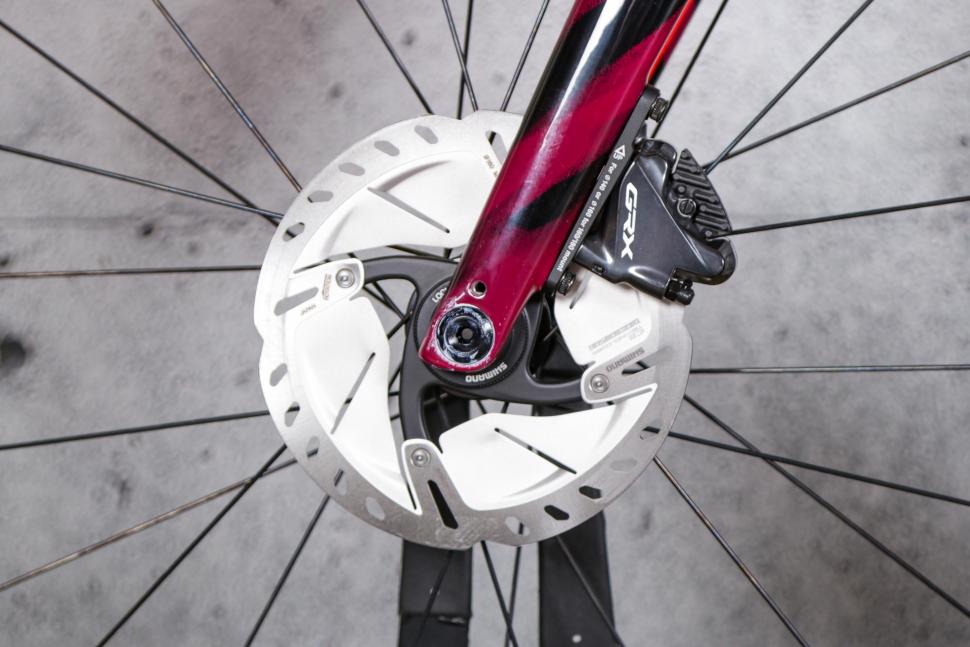

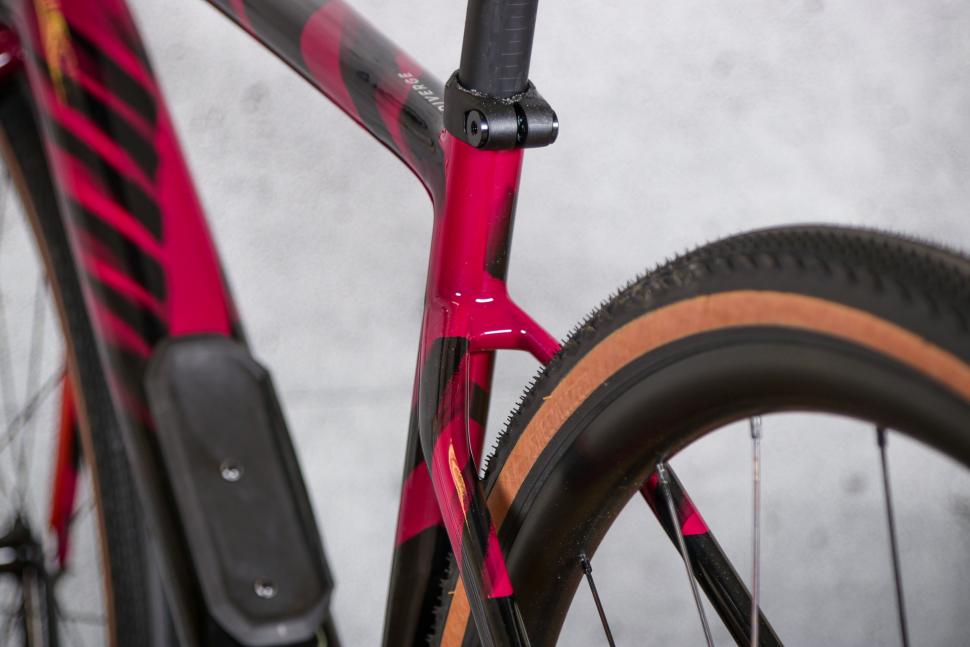


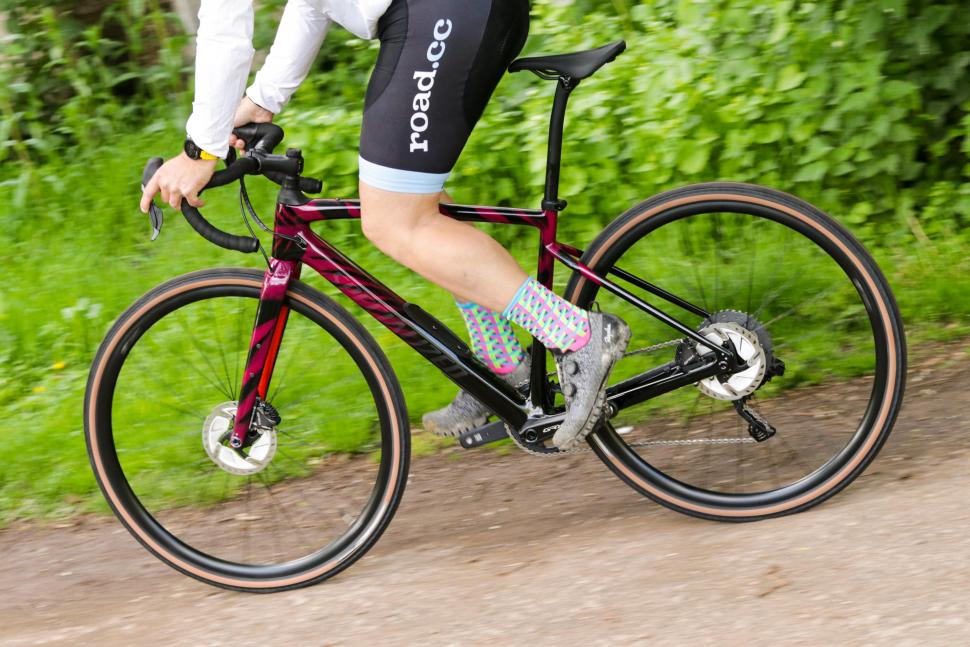








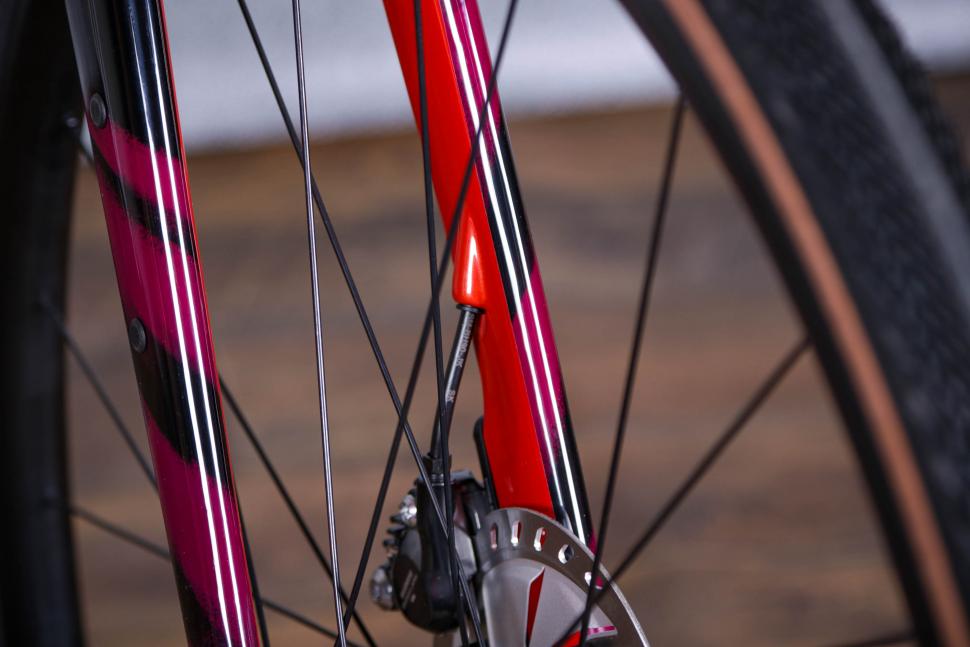
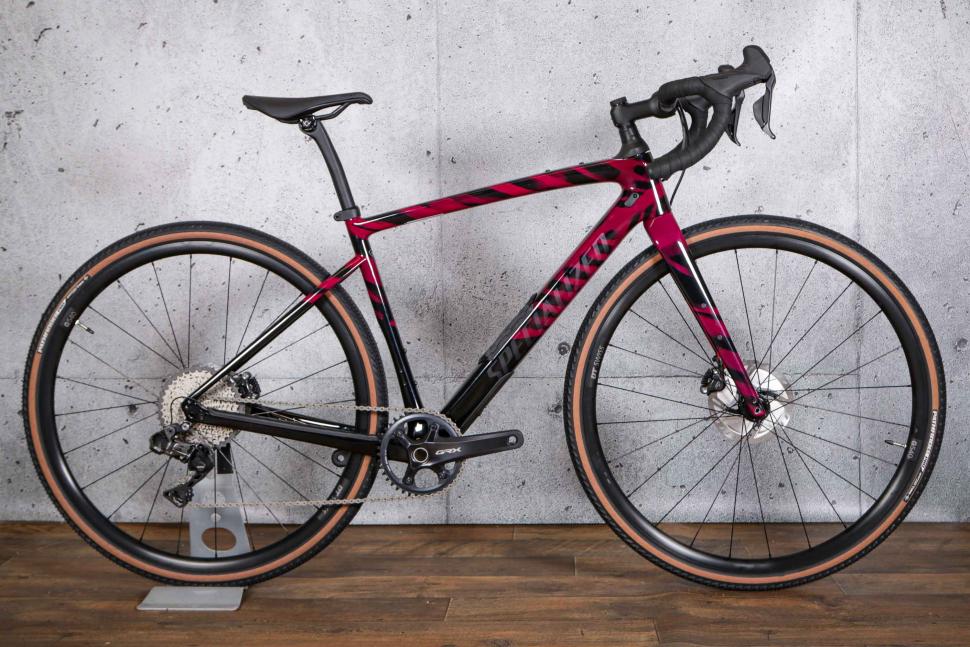









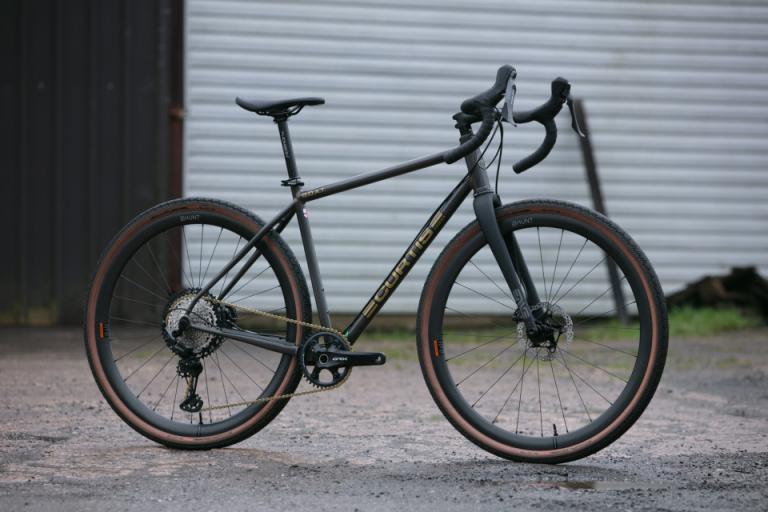


Add new comment
6 comments
It weighs more than my Fairlight Secan despite it being over twice the price and made of carbon!
No weight weenie parts on the Secan and it has a broader range with it's 2x set up.
I'm struggling with the pricing here.
I have the Diverge Comp which is identical to the reviewed bike bar the groupset and, thankfully, picked up before the price increase. Same frame, wheels, tyres, seatpost, bars, stem.
Is a 1x Di2 really, really worth a £1,250 differential in pricing?! Seems a bit OTT.
Small remarks: the FutureShock suspends the rider, not the bike. So it does not keep de wheel down on the ground. And to my knowledge (read it in an interview), the system is on/off, despite the in-between settings on the dial.
This struck me as wrong also. In addition there's no elastomer in futureshock 1.5 either - just 3 different springs.
Any chance of a picture inside the SWAT flap/box?
It's literally an open void. That's it!